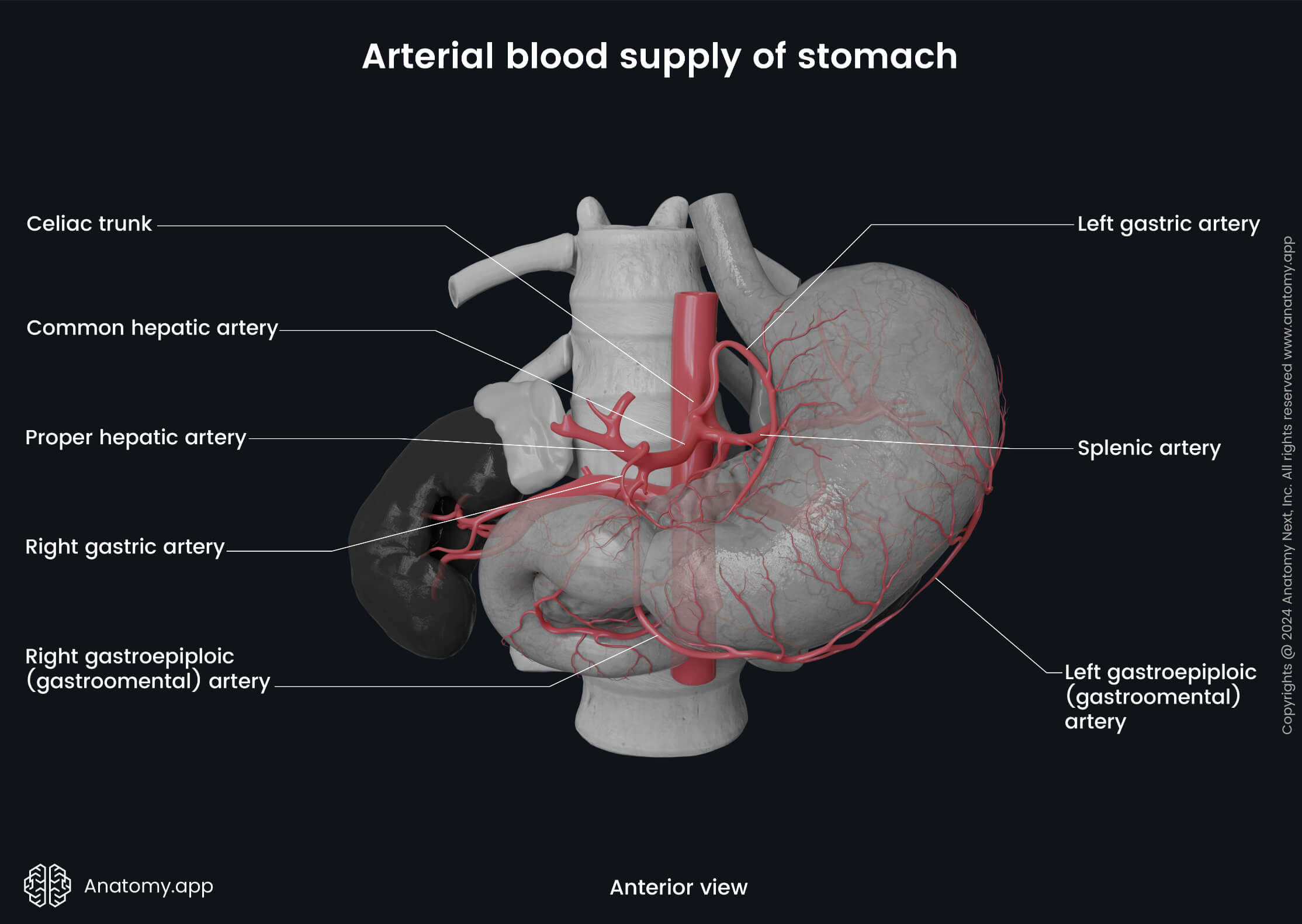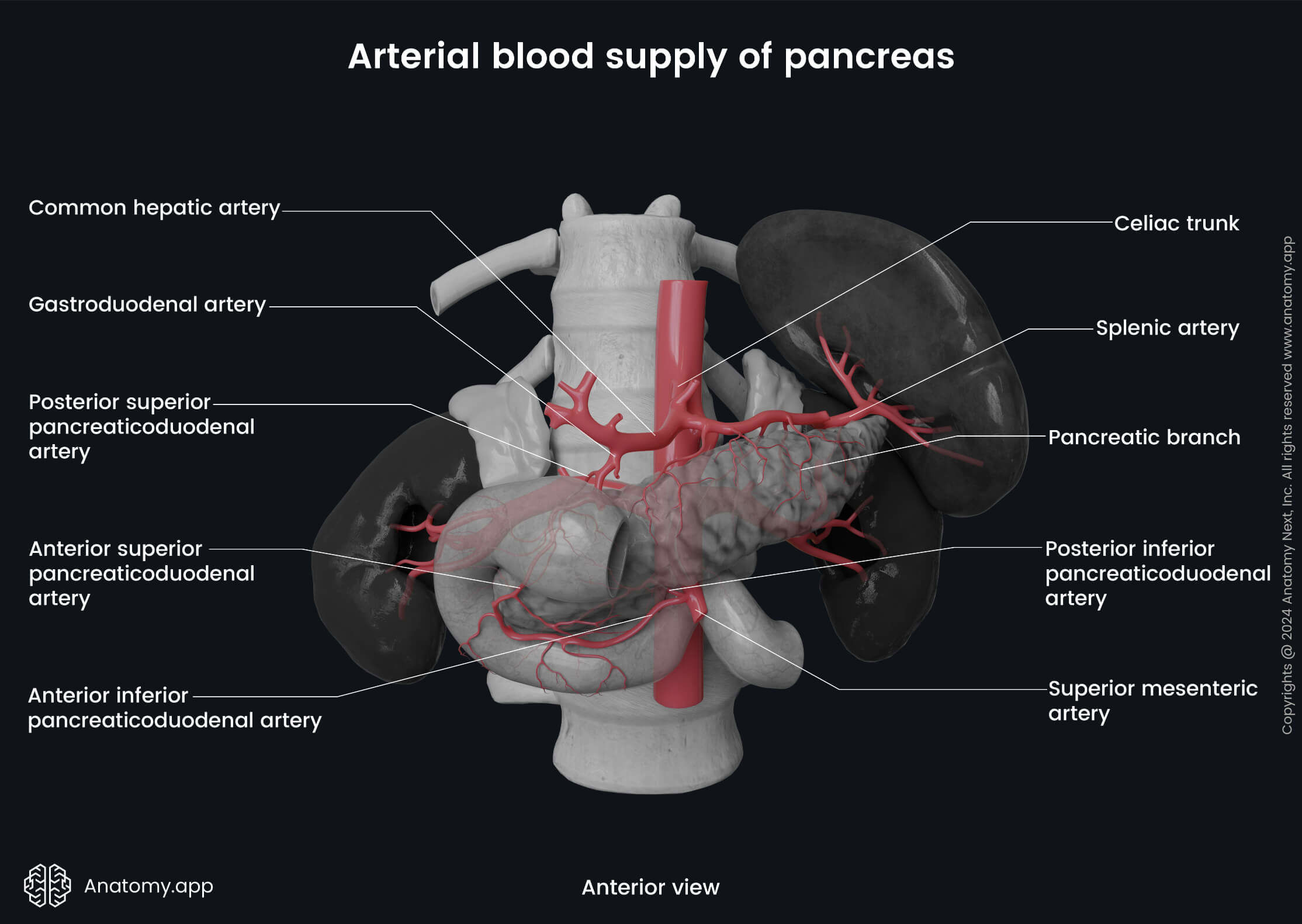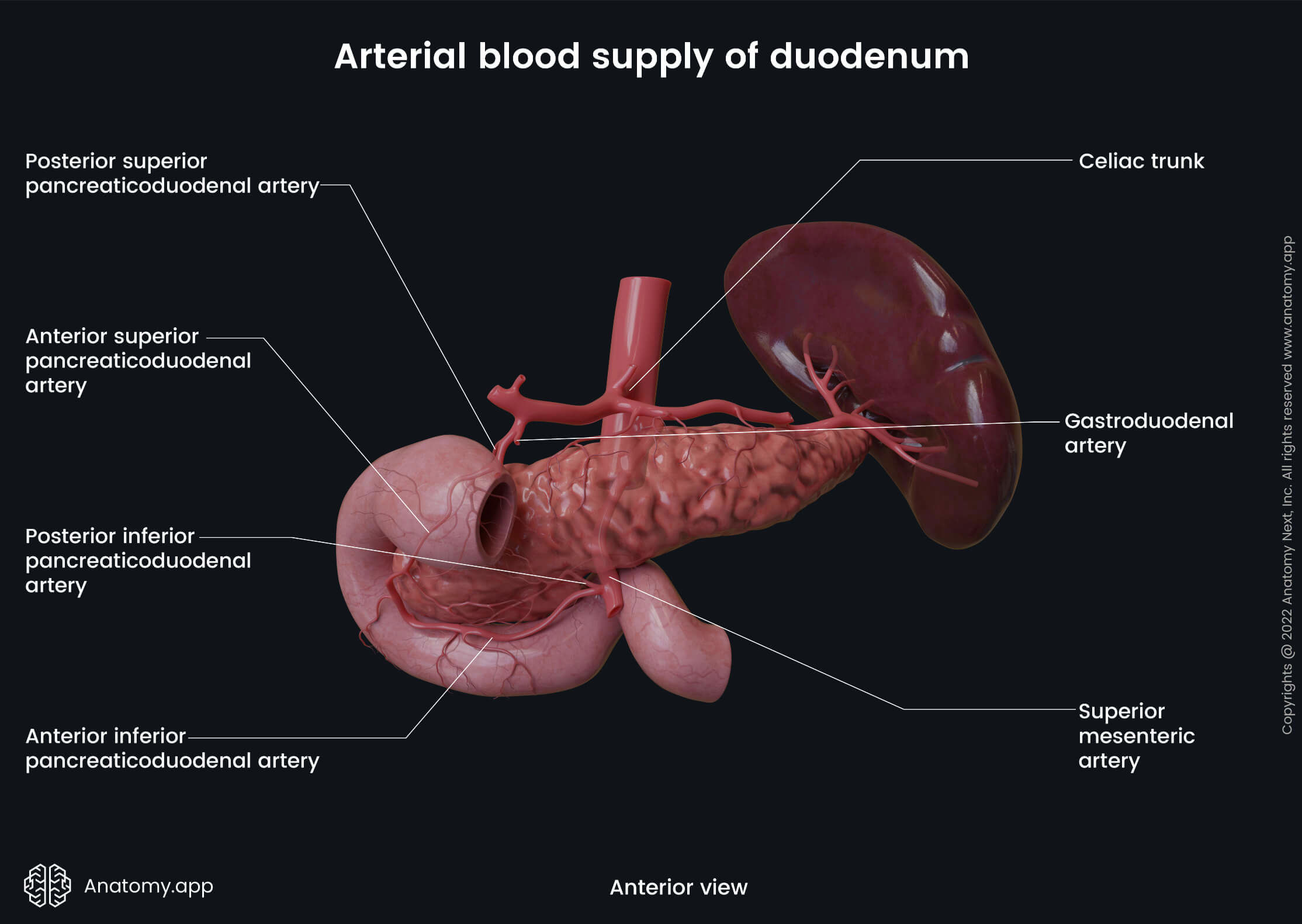- Anatomical terminology
- Skeletal system
- Joints
- Muscles
- Heart
- Blood vessels
- Blood vessels of systemic circulation
- Aorta
- Blood vessels of head and neck
- Blood vessels of upper limb
- Blood vessels of thorax
- Blood vessels of abdomen
- Blood vessels of pelvis and lower limb
- Blood vessels of systemic circulation
- Lymphatic system
- Nervous system
- Respiratory system
- Digestive system
- Urinary system
- Female reproductive system
- Male reproductive system
- Endocrine glands
- Eye
- Ear
Common hepatic artery
The common hepatic artery (Latin: arteria hepatica communis) is a short vessel arising from the celiac trunk that provides arterial blood supply to several organs within the abdominal cavity. The organs supplied by this artery and its branches include the liver, gallbladder, pylorus of the stomach, duodenum, and pancreas. The common hepatic artery gives rise to the following branches: hepatic artery proper, gastroduodenal artery, and, occasionally, right gastric artery.

Branches of common hepatic artery
Hepatic artery proper
The hepatic artery proper (also called proper hepatic artery) is a branch of the common hepatic artery that provides blood supply to the liver and gallbladder. It ascends within the free edge of the lesser omentum and reaches the liver. The artery travels on the left side of the bile duct and anterior to the portal vein. Near the porta hepatis, it divides into the right and left hepatic arteries that supply the liver.
As the right hepatic artery approaches the liver, it gives rise to the cystic artery that supplies the gallbladder. Often the proper hepatic artery gives rise to the right gastric artery. It descends to the pylorus of the stomach, passes along the lesser curvature supplying branches to this stomach region, and anastomoses with the left gastric artery, which branches off the celiac trunk.
Gastroduodenal artery
The gastroduodenal artery is a small blood vessel that most commonly arises from the common hepatic artery but may have variations in its origin. It supplies pylorus of the stomach and the superior part of the duodenum.

The gastroduodenal artery gives rise to the posterior superior pancreaticoduodenal artery and may also give off the supraduodenal artery near the upper border of the superior part of the duodenum. The gastroduodenal artery itself continues to descend posterior to the superior part of the duodenum. When it reaches the lower border of the superior part of the duodenum, it divides into two terminal branches: right gastro-omental artery and anterior superior pancreaticoduodenal artery.

The right gastro-omental artery (also known as right gastroepiploic artery) runs to the left, along the greater curvature of the stomach and anastomoses with the left gastro-omental artery from the splenic artery. The right gastro-omental artery gives off branches to both surfaces of the stomach, as well as branches that descend into the greater omentum.
The anterior superior pancreaticoduodenal artery descends and supplies the head of the pancreas and the duodenum (along with the posterior superior pancreaticoduodenal artery). These arteries eventually anastomose with the anterior and posterior branches of the inferior pancreaticoduodenal artery.
Right gastric artery
The right gastric artery is variable in its origin. In most cases, it arises from the proper hepatic artery, as mentioned before. However, sometimes it originates directly from the common hepatic artery or the region where the common hepatic artery divides into its branches. The right gastric artery descends and supplies branches to the lesser curvature of the stomach inferiorly. As mentioned before, it communicates with the left gastric artery.